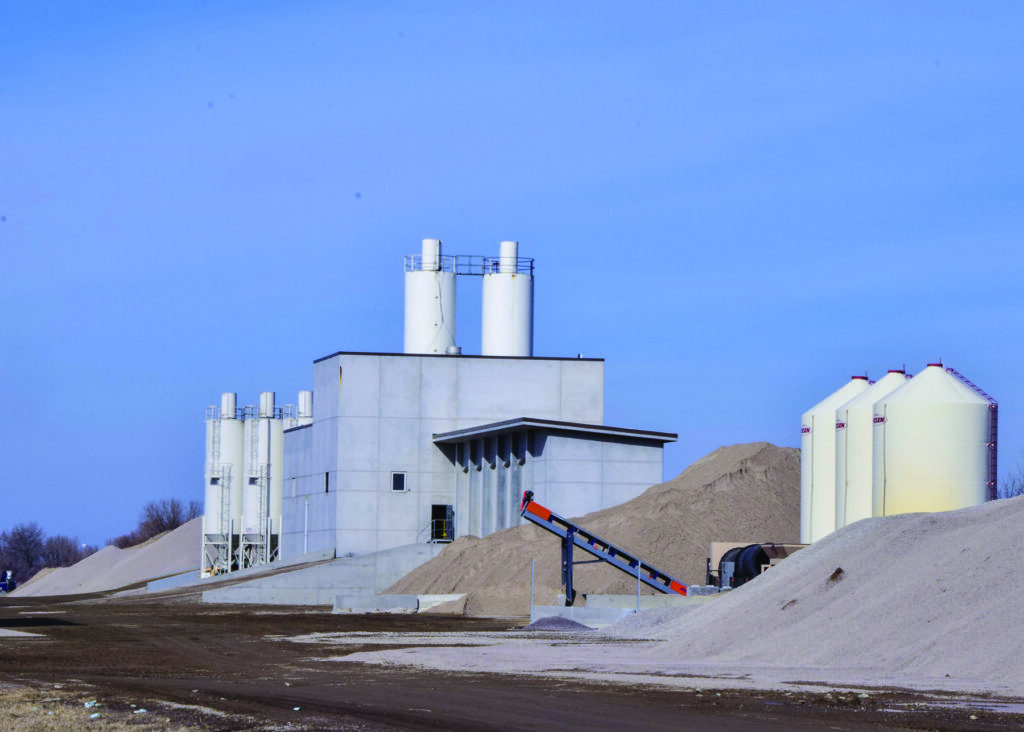
The Spring Prairie Hutterite Brethren operate several businesses in their proposed city of Stirling, including Taracon Precast, which manufactures concrete architectural panels.
Nancy Edmonds Hanson
If a judge in St. Paul says “yes,” Clay County will be gaining a 12th incorporated city soon – the first new municipality since Sabin was incorporated 92 years ago.
The Spring Prairie Hutterite Colony has completed all but the final step in its quest to be incorporated as Minnesota’s newest city, to be called Stirling. The settlement of 180 people five miles northwest of Hawley has filed the paperwork required by Minnesota statute 414.02, choosing one of two options to move from rural to urban status.
In February, the Spring Prairie Township board passed a resolution submitted by the colony, giving it a 30-day period to provide notices to the seven surrounding townships along its contiguous border. Then the prospective city’s petition was sent to the state’s chief administrative law judge, who – after a public hearing – will decide whether to grant the colony’s request.
According to Matt Jacobson, Clay County’s planning and zoning director, a request to become a city may originate in two ways. One requires a petition by at least 100 landowners in a contiguous area – not possible in this case, since the colony owns all of the 2,880 acres that fall within its proposed boundaries. Instead, colony leaders chose to bring their petition directly before the township board.
“It’s not a new process, but this is new and maybe unique in our time,” the planning director says. He speculates the most cases of adding new cities was probably establishment of the younger Twin Cities suburbs.
The administrative judge’s decision has not yet been reached. If the colony’s petition is granted, Stirling will rank ninth in population here in Clay County, ahead of Felton, Georgetown and Comstock. However, it will be the second largest in land area due to encompassing the farmland surrounding the settlement, second only to Moorhead.
The Spring Prairie Colony of 45 households operates a number of businesses in addition to large-scale farming. Perhaps the largest is Taracon, a plant that fabricates precast concrete panels used in architectural projects, including a parking ramp in downtown Fargo. Its members also tend 300 head of dairy cattle, an orchard and turkeys, along with an industrial-scale egg operation. They repair electrical motors and engines, print books in their distinctive Hutterian German dialect, and operate a trucking company.
Members live, eat, worship and work in a communal setting. Children are educated in the colony’s own K-8 school.
Spring Prairie was established in 1979 as a daughter site of the White Rock Colony near Rosholt, South Dakota. In recent years, it has had disagreements with the county over zoning regulations – which rule out multi-family residential housing in rural areas – and permits for some of its business developments. Last summer, the Minnesota Pollution Control Agency levied a $10,500 for failing to obtain a permit to dispose of demolition debris and municipal solid waste. Since then the situation has been corrected, according tot he MPCA.
At about the same time, the Clay County Commission approved a change to the county land development code to grant a conditional use permit precast concrete manufacturing becomes a conditional use permitted in several zoning districts, including agricultural general, agricultural service center and highway commercial. Spring Prairie already had had a precast concrete plant on its property for several years, but the plant had not been in compliance with the property’s zoning district.
As an incorporated city, Stirling will gain the ability to determine its own zoning regulations.


